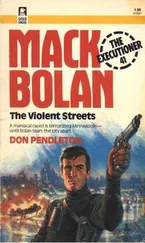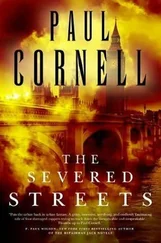“A week,” says Requer, closing his notebook.
Outside in the parking lot, a Central District officer, the first uniform in the apartment, has slipped away to eat lunch in the front of his radio car, a portable tape player on the dash blaring that same summer beat.
“It takes two to make a thing go right…”
“How the fuck can you eat after handling this call?” asks Dunnigan, genuinely amazed.
“Roast beef, rare,” says the cop, displaying the second half of the sandwich with pride. “Hey, you only get one lunch a shift.”
For summer, you need a scorecard to keep the lineup straight. Put Constantine and Keller in Pigtown, working a bar murder where the suspect turns out to be a kid who beat the robbery-murder of an elderly schoolteacher four years ago. Put Waltemeyer and Worden at a reggae dance club near the Metro tracks in the Northwest, its front walk covered by a dead Jamaican and a dozen spent 9mm casings, its interior cluttered by about seventy other Jakes who swear to Jah himself that they see not a blessed thing, mon. Put Dunnigan down in the Perkins Homes for a body in the closet; Pellegrini in the Central for a body in the gutter; Childs and Sydnor in the Eastern for a female skeleton beneath a rowhouse porch, a skeleton that is finally matched to a missing persons report three weeks later. She was the tiniest thing, barely eighteen and a hundred pounds dripping wet, and her bastard of a stepfather waited only long enough for his wife to go out of town for a week. He brought three friends home for Saturday night and after a six-pack, the four of them took turns on her, then strangled her by wrapping a towel around her neck and pulling in different directions.
“Why are you doing this?” she asked, pleading.
“Sorry,” her stepfather told her. “We got to.”
The shouts and screams and curses rise and fall with the temperature in the stagnant, fetid air. The crescendo comes in the last and hottest week of July, six straight days of boiler room heat that makes the citywide police frequency sound like an endless tape:
“Forty-five hundred Pimlico, odd side in the rear, for a woman screaming… Thirty-six hundred Howard Park, for an armed person… Twenty-four fifty-one Druid Hill, for an assault in progress… Signal thirteen. Calhoun and Mosher. Signal thirteen… Fourteen-fifteen Key Highway for a man beating a woman…”
And then, the dispatch call that everyone most fears, the dayshift broadcast that only comes when the heat has truly touched the wrong nerve in the wrong man in the wrong place.
“Signal thirteen. Seven fifty-four Forrest Street.”
It begins with one inmate and one guard mixing it up in the security booth at the end of the No. 4 yard. They are joined by another inmate, then another, then a fourth-each one wielding an aluminum softball bat. Riot.
Detectives fly out of the homicide office in bunches-Landsman, Worden, Fahlteich, Kincaid, Dave Brown, James-heading for the Maryland Penitentiary at the eastern edge of the city’s downtown, the gray stone fortress that has served as the state’s maximum security prison since James Madison was president. The Pen is the end of the line for every lost cause in the state corrections system, the final repository for the men who somehow can’t live within the limits of the prisons at Jessup and Hagerstown. Home to Death Row and the gas chamber, the Maryland Pen warehouses human beings who are facing an average sentence of life imprisonment, and its antiquated south wing has been called “the innermost circle of hell” by a state attorney general’s report. By any reckoning, the population of the Maryland Pen has nothing whatsoever to lose; worst of all, they know it.
For fifteen minutes, the Pen correctional officers lose complete control of the recreation yards to more than three hundred inmates armed with homemade knives, clubs and every other available weapon. Two guards are beaten with bats in the No. 4 yard, another is bludgeoned with a metal cross bar from the weight room. A fourth is chased into the prison shop building only to find that the security area gate is locked shut. Unwilling to risk unlocking the metal gate, a female correctional officer watches, terrified, from the other side of the partition as six or seven inmates beat and stab the guard to within an inch of his life. Twenty other inmates drag another female officer out of a counseling clinic at the southern edge of the recreation yard, beating her badly, then rush into the clinic to batter a prison psychologist. Before being repulsed by a detachment of guards rushed through the Madison Street entrance, the inmates set fire to the clinic, torching as many psychological evaluations as they can find. Led by a deputy warden, the reinforcements arrive to retake the clinic and rescue the female officer and the psychologist, who has fallen to the floor of his office beneath a rain of blows from a metal pipe. The prisoners are pushed slowly back toward the yard-a retreat that only becomes a rout after two guards fire their shotguns from the clinic door. Two inmates fall wounded on the asphalt.
On the towers at the penitentiary’s east and west walls, guards try to fire their shotguns over the heads of the rioters-which only adds to the carnage by striking several guards as well as rioters. Just outside a west wall tower, yet another correctional officer is felled by shotgun pellets fired by an east wall guard two hundred yards away. There are no attempts to escape, no effort to take hostages, no demands, no negotiations. It is violence for its own sake, the mirror image of the summer that exists in the city that surrounds the penitentiary walls. You can lock them up and you can lose the key, but the men inside the fortress on Forrest Street still march to the rhythm of the streets.
Fifteen minutes after the last prisoner has been hauled out of the yard and dragged to a tier for lockdown, Jay Landsman walks across the No. 3 and 4 yards, mentally noting the bloodstains that represent a half-dozen crime scenes. From the south wing tiers immediately above him, the focused rage of the prison comes down on him like rain. Walking alone in the open yard, Landsman is made for a city detective immediately, perhaps by prisoners who have been among his clientele.
“Yo, you white bitch, bring yo’ tight ass up here and drop them trousers.”
“Get out my yard, you fuckhead cop.”
“Don’t be down there after dark, yo, we’ll fuck you good.”
“Eat my shit, cop. Eat my shit.”
The last comment catches Landsman’s ear; for just a moment he pauses, staring up at the south wing tiers.
“C’mon up here, faggot. We’ll fuck you like we fucked them bitch guards.”
“Bring yo’ white ass up here, faggot.”
Landsman lights a cigarette and waves cheerfully at the stone facade, as if it were some kind of cruise ship pulling away from its moorings. In its moment, the perfect gesture-better than a hard look or the standard finger-and the catcalls fall away. Smiling maniacally, Landsman waves again and the message becomes clear: Yo, assholes. My white bitch ass is going home tonight to an air-conditioned rancher and a woman and a dozen steamed crabs and a six-pack of beer. You’re going to a 98-degree prison cell for a steaming week of lockdown. Bon voyage, you simple motherfuckers.
Landsman finishes his tour of the yard and confers with the deputy warden. Nine correctional officers are hospitalized; three inmates have also been sent to emergency rooms. The prison authorities are responsible for security, but homicide will handle the prosecution of those inmates named as being part of the riot. That’s the theory anyway. But it’s hard for any guard to remember a single face when a crowd of men is beating on him with aluminum bats; after an hour, the tentative list of suspects stands at only thirteen inmates positively identified by authorities.
Читать дальше












